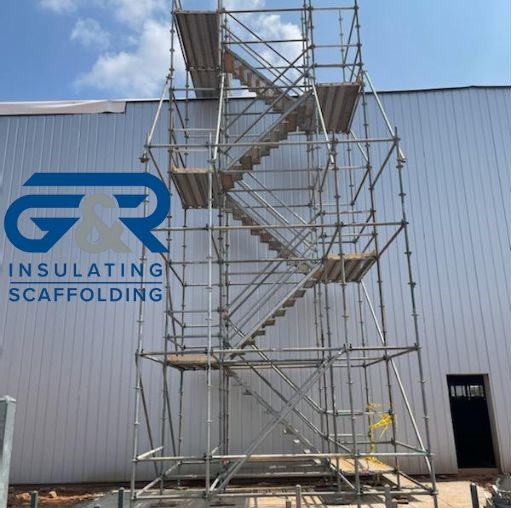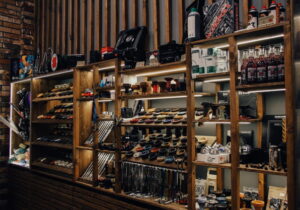
industrial scaffolding - 1
When it comes to construction, maintenance, or heavy industrial work, safety and efficiency are two things you simply can’t compromise. Whether you’re renovating a tall structure, managing an oilfield project, or just exploring better ways to access hard-to-reach places, industrial scaffolding plays a central role. But what exactly is it, and how can the right scaffolding system help you get the job done right the first time?
This article will walk you through everything you need to know about industrial scaffolding in an easy-to-understand and enjoyable way. You’ll discover how it works, the different types available, how professionals like G & R Insulating and Scaffolding use it across various industries, and how to choose the right service provider. By the end, you’ll be more informed, more confident, and ready to make smarter decisions.
To learn more about how a trusted company can help, feel free to explore G & R Insulating and Scaffolding, which has been leading the way in Western Canada since 2000.
What Is Industrial Scaffolding and Why Does It Matter?
Imagine trying to paint a five-story building without a ladder or platform. Sounds impossible, right? Industrial scaffolding provides that support. It’s a temporary structure used during construction, repair, or maintenance that gives workers a safe and elevated platform to perform their jobs. But not all scaffolding is created equal.
In industrial settings, where projects often involve oil refineries, chemical plants, or large mechanical systems, scaffolding must be especially tough, customizable, and secure. The materials used, steel pipes, clamps, and heavy-duty platforms, are built to withstand both height and harsh environments.
So, why does it matter? Because it directly affects worker safety, project timelines, and even overall costs. Without properly planned scaffolding, the risk of accidents increases, and delays can quickly pile up. If you’re overseeing a project, understanding how scaffolding works isn’t optional; it’s essential.
Common Types of Industrial Scaffolding (And Their Best Uses)
If you’re picturing a one-size-fits-all structure, think again. There are multiple types of industrial scaffolding, each designed for specific job types and environments. Let’s explore the most commonly used systems:
- Tube and Clamp Scaffolding: Highly versatile and perfect for projects with irregular shapes. The clamps allow for free-form construction, great for tight spaces.
System Scaffolding: Often used in large-scale industrial projects. It’s modular, meaning it can be easily assembled and dismantled, saving time and labor. - Suspended Scaffolding: Hangs from the top of structures and is useful for high-rise buildings or bridges.
- Cantilever Scaffolding: Used when the ground below isn’t strong enough to support a scaffold. It’s anchored into the building itself.
Knowing the right type to use can make a massive difference in project efficiency. Choosing incorrectly may lead to costly errors or hazardous conditions. This is why professional providers, like G & R Insulating and Scaffolding, begin every project with detailed scaffold planning based on the environment and task at hand.
How Industrial Scaffolding Supports Safety and Compliance
One of the biggest benefits of industrial scaffolding is its contribution to job site safety. Scaffold-related injuries are common when proper systems aren’t in place. But with the right structure and an experienced team, these risks can be drastically reduced.
Industrial environments come with unique hazards: chemical exposure, extreme temperatures, and high elevation. Proper scaffolding acts like a safety net, giving workers secure footing and handrails while allowing freedom of movement. More than just structure, it also promotes compliance with health and safety regulations.
Reputable companies ensure scaffolding is inspected, tested, and maintained regularly. They follow occupational safety guidelines and train their staff to spot issues before they become serious. A reliable team won’t just build a scaffold, they’ll build peace of mind.
When to Hire Professional Scaffolding Services
It might be tempting to cut costs and go DIY, but industrial scaffolding isn’t a weekend project. Hiring a professional service isn’t just smarter, it’s safer and more cost-effective in the long run.
When you choose a certified provider, you benefit from:
- Scaffold Planning: Every site is unique. Pros analyze your project and design a custom solution that meets safety and structural needs.
- Efficient Setup and Removal: Time is money. Professionals get their system up and down quickly, without cutting corners.
- Ongoing Inspection: You won’t need to worry about checking bolts or platform stability—they’ll handle all the details.
- Insurance and Liability Coverage: In case of an accident, you’re protected. That’s something no DIY setup can guarantee.
If you’re managing a job that involves oilfield buildings, tank insulation, or mechanical pipe access, partnering with companies like G & R Insulating and Scaffolding is a wise investment. They provide not just materials but also the expertise needed to manage industrial-scale projects effectively.
How to Choose the Right Industrial Scaffolding Provider
With so many scaffolding companies out there, how do you pick the right one? Here are a few simple steps:
- Check Experience: Look for a company with a proven track record in industrial projects.
- Evaluate Their Services: Do they only deliver scaffolds, or do they provide planning, setup, and safety checks too?
- Ask About Training and Certification: Workers should be trained, insured, and fully briefed on safety protocols.
- Get a Quote: Compare prices, but don’t go for the cheapest unless you’re also getting quality and accountability.
- Check Reviews and References: What do past clients say? Are there testimonials or case studies available?
A good recommendation? Consider exploring Grand River Insulation, a source many in the construction industry trust for reliable support services. You’ll also want to check out how G & R Insulating and Scaffolding has built a solid reputation for delivering professional-grade industrial scaffolding for over two decades.
Frequently Asked Questions (FAQs)
- What is the difference between commercial and industrial scaffolding?
Commercial scaffolding usually involves smaller structures like office buildings or retail spaces. Industrial scaffolding is for more complex, larger-scale projects like factories, oilfields, and heavy-duty mechanical systems. - Can scaffolding be reused on different projects?
Yes, most industrial scaffolding systems are modular and reusable. However, they must be inspected and approved before each use to ensure safety. - How long does it take to set up industrial scaffolding?
Setup time depends on the size and complexity of the project. A well-trained crew can assemble a system within a day or two for smaller jobs and several days for larger ones. - Is it legal to build your scaffolding?
While it’s possible in theory, it’s not recommended unless you have training and certifications. DIY scaffolding in industrial settings can pose serious legal and safety risks. - What happens if scaffolding fails an inspection?
It must be removed or repaired immediately. A failed inspection usually results in a site shutdown until the structure is deemed safe.
Conclusion
Choosing the right industrial scaffolding system and service provider isn’t just about construction—it’s about trust, safety, and performance. From understanding the types available to recognizing when to call in the pros, being informed puts you one step ahead in any industrial project.
Companies like Grand River Insulation and G & R Insulating, and Scaffolding have shown how professional scaffolding solutions can improve efficiency and protect workers in challenging environments. Whether you’re new to industrial projects or a seasoned site manager, taking the time to learn and choose wisely will always pay off.





